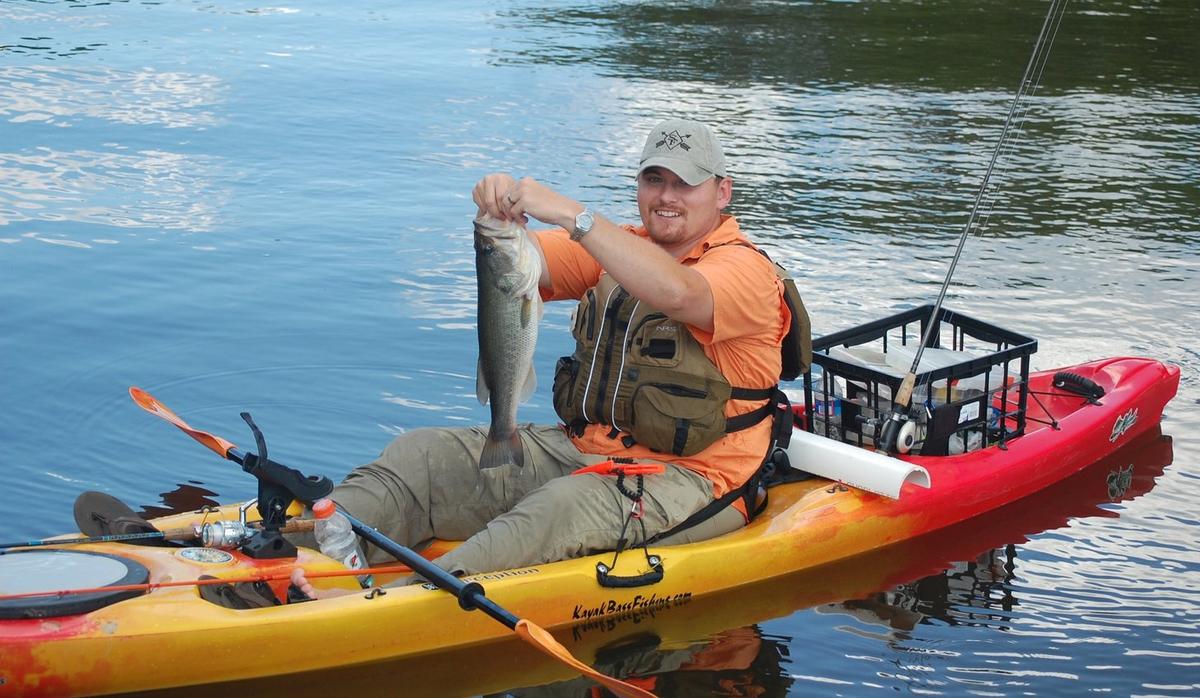Kayak Fishing: 7 Tips To Become A Better Kayak Angler
Kayak fishing is all the rage right now, and it’s for good reason. Kayaks are much cheaper than traditional gas burners, they allow anglers access to some of the most under-fished and remote waters; and they can be rigged with just about any feature a die-hard bass-head can imagine.This popularity has resulted in scads of articles written about how to set up the perfect fishing kayak, which kayaks to buy for fishing, and what types of accessories will or won’t help you load the boat once you’re out on the water doing the actual kayak fishing.What’s been missing though is any in-depth discourse on the mechanics of actually fishing out of a kayak, because the bottom line is – it’s different than fishing out of a boat. You’re closer to the water, slightly less stable, sitting down, and at the mercy of the wind and current - all factors that require a little different approach than angling from a boat.To address some of those challenges, we put together the following guide to kayak fishing – from mastering boat control to casting and reeling mechanics.
1. Learn To Cast One Handed
This may be the most difficult adjustment for anglers used to fishing from the bank, or the stable front deck of a boat. Even the most stable kayaks don’t have much room between the sitting surface and the water – making the standard two-handed windup cast a dicey proposition. Experienced kayak anglers cast one handed the majority of the time, with either baitcasting or spinning tackle, so it’s important to gear up accordingly. Instead of the super heavy flipping stick and 1 ounce jig, maybe opt to fish with lighter combos and more finesse tactics.
2. Master The One Handed Paddle
Just like the one handed cast, efficient kayak angling requires skill in handling a paddle with one hand. Paddling a kayak is simple with two hands, as the rhythm comes easily to even the least experienced of anglers. But what do you do when you’re fighting a fish with one hand, and you’ve got to steer your boat back upstream to get on the other side of a laydown or avoid an overhanging branch? Practice locking the shaft of your paddle along a forearm, which anchors it along your arm, and allows you to use it more like a canoe paddle.
3. Use Your Feet
This might seem weird, but you’d be surprised how often experienced kayak anglers use their feet in some way while fishing. If your boat is narrow enough, you can actually use them as rudders to steer your drift on rivers, and they work as great anchors when fishing rip rap, laydowns, and other shallow areas – simply stick a foot out and hold on to the log until you’re done fishing the hole. Feet are also great for re-directing the boat from a stump, log, or other obstacle while your hands are busy fighting a fish.
4. Cast To Steer
Baits that offer resistance like crankbaits, spinnerbaits, and chatterbaits can actually be used to help steer the boat. If you’re fishing a crankbait from a lightweight kayak, you’ll quickly realize that the simple resistance of reeling in the bait will actually pull your boat in the direction you’re casting. Use this to your advantage, and make casts in specific directions to subtly adjust your boat’s position.
5. Utilize Eddies For Kayak Fishing
You might think current is a nightmare to fish in a kayak, but that’s actually far from the truth – provided you know how to use it to your advantage. Most kayaks are short and light enough to actually sit entirely in an eddy, preventing the boat from moving downstream, and giving you plenty of time to thoroughly fish the corresponding current seam. To maximize this, go past the spot you want to fish, then tuck into the eddy behind it, and fish until your heart’s content – without even having to paddle.
6. Don’t Be Afraid To Anchor
Although cumbersome, anchors definitely have a place in the kayak fishing arsenal. This is particularly true on lakes when it’s windy, or in areas offshore where you want to stay in one particular area. For most kayak models, a 2-4 pound claw anchor is more than sufficient. Be careful anchoring in current though, as if something were to happen, the current can actually push the whole boat under water. Most river kayakers use a quick release clevis on their anchors, if they anchor at all.
7. Hug The Shoreline
When it’s windy, or when paddling up-current, it takes a lot of effort to make any headway, much less fish. In these situations, use the minimal draft of your kayak to your advantage. Instead of paddling right down the middle of the river or lake, get as shallow as you can. The current is much less in super skinny water, and wind and waves are also mitigated by shoreline vegetation and structures, you’ll paddle more efficiently, and you’re going to have much more energy once you get to your honey hole.
Updated May 14th, 2020 at 7:28 AM CT


